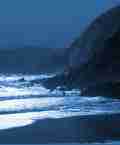 |

|
|||
|
Introduction to Irish Battles 'Gentle when stroked', says the slogan of the United States 69th Regiment - the regiment which has for so long gloried in the name of the Fighting Irish-'Gentle when stroked; fierce when provoked'. The aphorism was suggested by the qualities of the Irish wolfhound, and it was accepted as a summary of the Irish national character at least as early as 1780, when the Volunteers of that time made a propagandist use of it. It is probably apposite. History gives evidence of the combative characteristics of the Irish; yet it might equally well be argued that, left to themselves, the Irish were never given to militarism. The facts remain, however, that Irish history is full of battles and that Irishmen have always been attracted by military service, so much so indeed that the type and figure of the historic Irishman might well be a man in uniform. Theobald Wolfe Tone, the father of Irish republicanism, would certainly have liked to think of the Irish as soldiers, and we remember Dean Swift's statement that 'most sorts of diversion in men, children and other animals are in imitation of fighting' -and that Swift was an Irishman. One can list more than 2.00 military engagements, great and small, although for the most part minor affairs, which took place in Ireland from medieval times to 1798. If the sites of these engagements are plotted on a map an interesting pattern emerges. One finds that most of the fighting took place within a belt fifty or so miles wide extending around the coast of the island. No major battle was fought more than thirty miles inland, and indeed the whole area of the midlands, extending southward from Fermanagh to Tipperary and westward from Kildare to the Shannon, is almost devoid of battle sites. Most of the battles were fought in Leinster, in east Ulster and in south Munster, although the plains of Connacht, the entry from Ulster to Connacht in the neighbourhood of Sligo, and east Donegal were also the scenes of warfare. It is not difficult to explain this geographical distribution, although, as with all the affairs of men, it did not proceed from a single cause. Wars are the clash of systems and battles are the result of hostile movements. In Ireland as elsewhere, battles were fought in places where progress along lines of communication was interrupted by natural obstacles. Warfare, once begun, was conditioned by the terrain. But the physical aspect of Ireland had as much to do with the causes as with the course of her wars. Ireland is flat in the centre and mountainous to the north and south, with further mountains rising along the greater part of the west coast and a long chain stretching parallel with the east coast south of Dublin. Drainage is effected largely by rivers flowing south. Access to the interior in the days when bog and forest made progress difficult was afforded by the river valleys. This was most notably so in regard to the southern half of the island, where the valleys of the rivers Lee, Blackwater, Suir-Nore-Barrow and Slaney provide passages through the mountains into the low limestone country which lies behind them. But the main entry into the heart of Ireland-the gateway to the island as a whole-has always been the flat stretch of fifty or so miles of eastern coastline lying between the granite masses of the Mourne and Wicklow mountains, the area which is watered by the rivers Boyne and Liffey and which, from the time of the incursions of the Norsemen, has had Dublin as its chief town. Here the central plain reaches to the Irish Sea. Since, in historic times, outside influences have been exerted on Ireland largely through England, and since influence is exerted along lines of communication, it has been of the greatest significance that the passages leading towards Ireland from the centre of English power-that is, the south of England-reach the Irish Sea at points directly opposite the best entries to the Irish interior. The Cheshire plain, the gap between the English Pennines and the Cambrian mountains, faces the north Leinster entry to the Irish central plain. This always was, and still is, the best route from London to Ireland. With the development of Anglo-Irish relations after the twelfth century, the position of the already well established urban centre of Dublin, the port of the entry, was assured. Dublin became the Irish capital, and control of Dublin meant the ultimate control of the whole island of Ireland. The second passage leading through England towards Ireland is that which reaches the Irish Sea at the Severn and the Bristol Channel. Again, this faces a series of convenient entries to Ireland, the mouths of the river valleys of the south-east and south coasts. The early battles fought by the Irish against Norsemen and Normans were the consequences of invasion. Clontarf, the struggle for Dublin in 1171 and the many contests between the Norman knights and archers and the local Gaelic rulers, of which Dysert O'Dea, fought in 1518, is one example, were brought on by native resistance to the incursions of outsiders who were bent on exploitation or conquest. These outsiders were frequently assisted by disgruntled or ambitious native rulers. The Norsemen at Clontarf, for example, were attempting to strengthen their hold on Dublin and its hinterland, but they were also intervening in a local struggle between the kingdom of Leinster and Brian Boru, the ruler who had made himself High King of Ireland. The battle was fought at Clontarf, outside Dublin, because Dublin was a Norse town. Possession of the Norse towns of Wexford, Waterford, and-above all-of Dublin was the first objective of the twelfth-century Norman invaders. These towns provided ports through which communications with England could be kept up, bases for further aggressive activities, and points of entry to the interior. Irish warfare from the twelfth to the sixteenth century was thus for the main part a series of struggles between the invaders and their descendants on the one hand-backed increasingly by the growing power of England-and the Gaelic Irish lords on the other. Rory O'Connor, the High King at the time of the Norman invasion, had recognised the king of England as his overlord; but neither Rory nor the English king nor any of their immediate successors exercised a centralised control. Although English law and the feudal system were introduced by the invaders, their introduction did not mean an overthrow of the Gaelic institutions. The two systems, old and new, continued to function side by side. Power in Ireland in the thirteenth century was exercised by individuals, Gaelic and Norman, who had established themselves as local lords, and whose efforts were directed towards the maintenance or extension of their lordships. There was no concerted plan either of conquest or of resistance, nor were such plans possible. Within a century of the invasion, the Normans had consolidated themselves in Leinster and Meath and had overrun great parts of Munster and Connacht. They had also established an outlying settlement in east Ulster. In general, they had seized the good land of the central plain and the southern river valleys. and they had taken over control of the Norse towns. The Irish, who lived in a loosely organised series of kingdoms and lordships, and who had never sought to set up urban communities of their own, had tolerated the Norse towns. They had done this, it seems, not simply because they were unable to eliminate them; theyappre-ciated their function as trading centres. Nor did the settlement of the Normans and their administrative control of great parts of the country mean a clearance of the original inhabitants. The population of Ireland was not great and there was much un-occupied, or sparsely occupied, land. The workers, the lower order of the Irish social pyramid, remained in the areas under Norman role, and in many places throughout the 'conquered' provinces Gaelic institutions were maintained and the role of the Gaelic dynastic families was uninterrupted. This was so in poorer and less accessible places, in the Leinster mountain chain and in the boggy part of the south midlands, west of Kildare. In these circumstances, the main military contests of the first century and more following the invasion occurred on the peri-phery of the Norman penetration. The battles of the late twelfth century-the engagements at Cashel, Thurles and Downpatrick -were fought on the frontier of areas which were the first to be overrun. The battlefields of the thirteenth century were still more remote from Leinster and the midlands-Kenmare, where the MacCarthys successfully resisted further Norman progress into Kerry, Caol Uisge on the river Eme and the Rosses near Sligo, where the O'Donnells of Tir Conaill fought it out with the Normans of Connacht, and again Down, where the rising power of the O'Neills was checked by the sturdy Norman settlers of east Ulster. If matters had progressed differently the sequel to this tale of Norman invasion, consolidation and advance would almost certainly have been an advance of the frontier. The resistance put up by the MacCarthys in south-west Munster, the O'Briens in Thomond, the O'Donnells and O'Neills in Ulster and other Gaelic lords elsewhere would eventually have been overcome, although the Anglo-Normans would have been changed in the process. What happened in Scotland might have happened in Ireland. Indeed the Irish development of modem times might have been anticipated, and a nation of mixed blood might have emerged centuries before it did. But the frontier which lay between the Norman and Gaelic worlds did not advance. It receded. Gaelic Ireland was not submerged. The Norman conquest of Ireland was not completed.
The Introduction continues here
Taken from the Introduction to Irish Battles by G.A. Hayes-McCoy, published by Appletree Press.
|
[ Back to top ]
All Material © 1999-2009 Irelandseye.com and contributors
